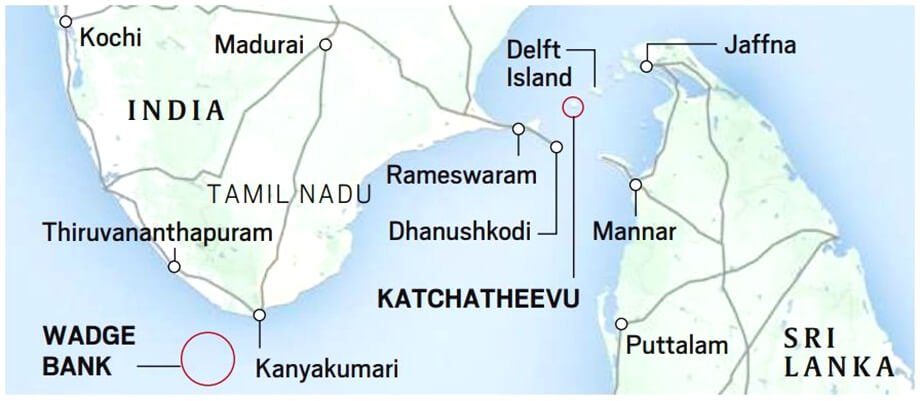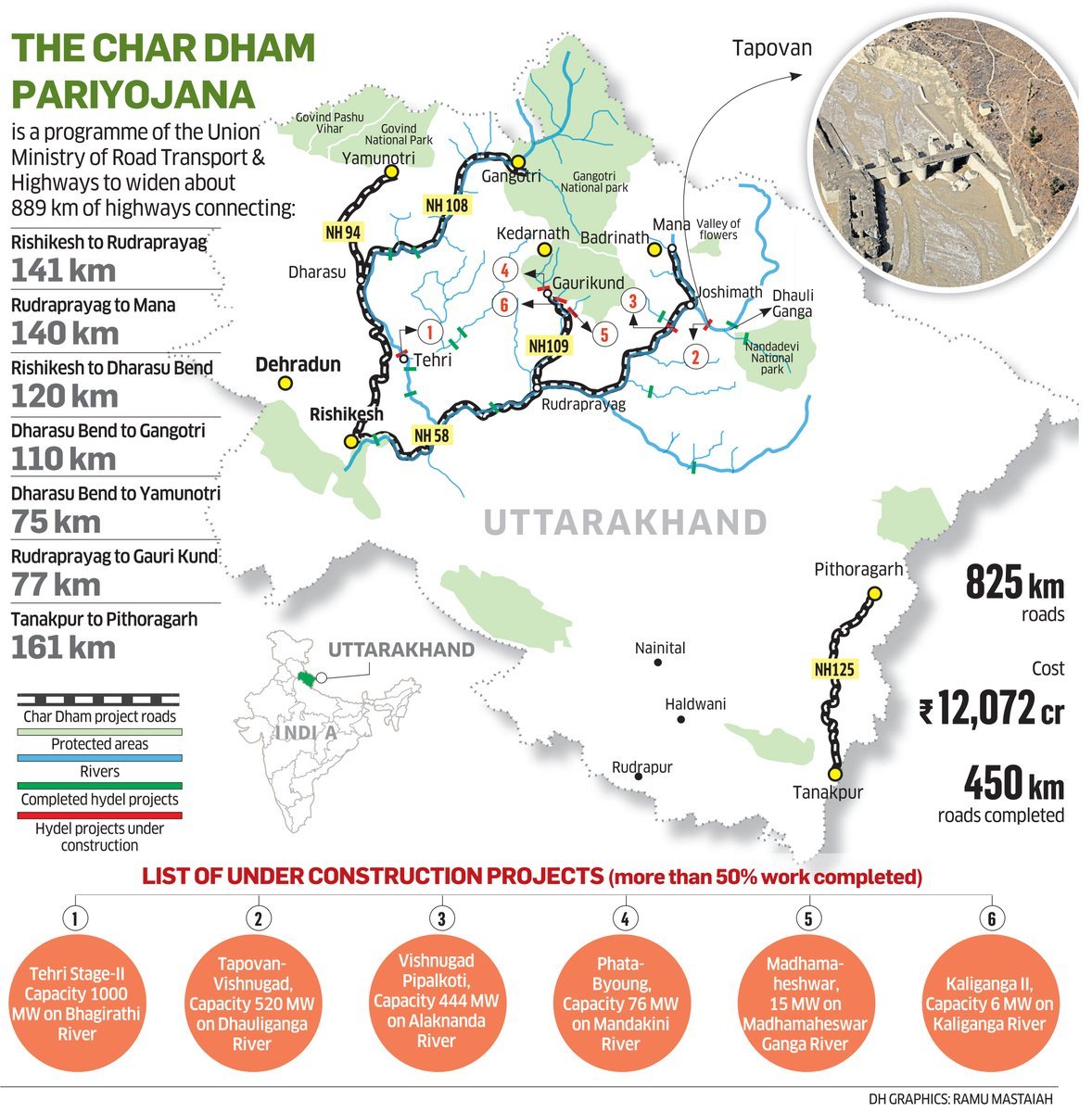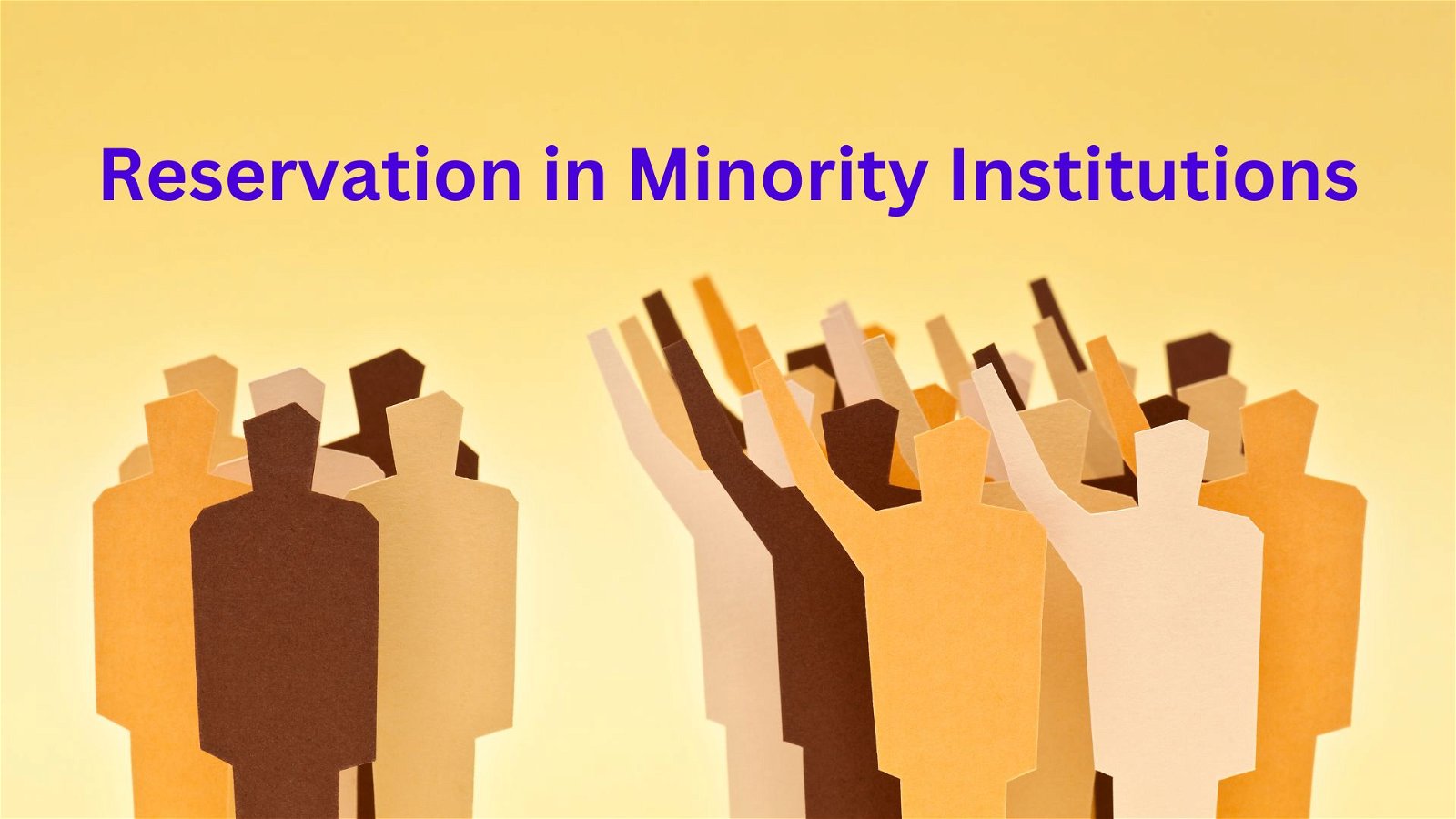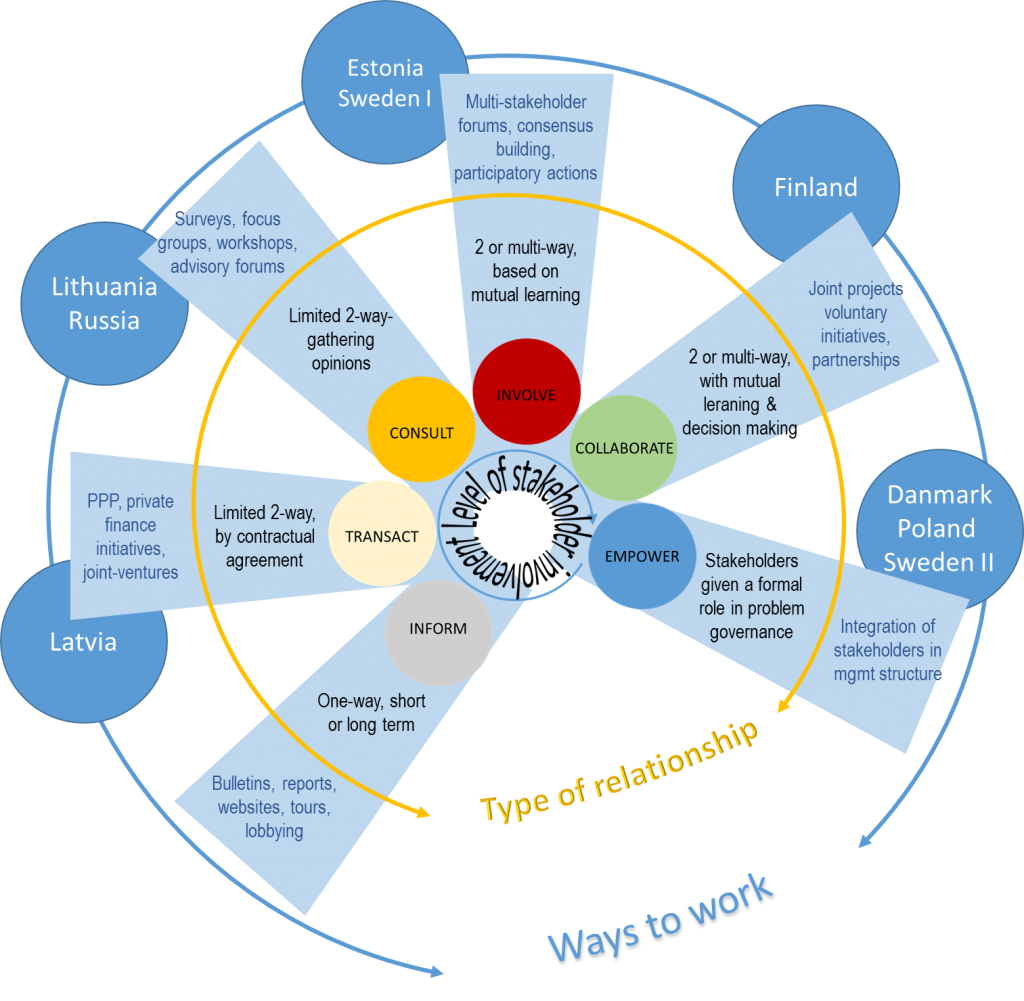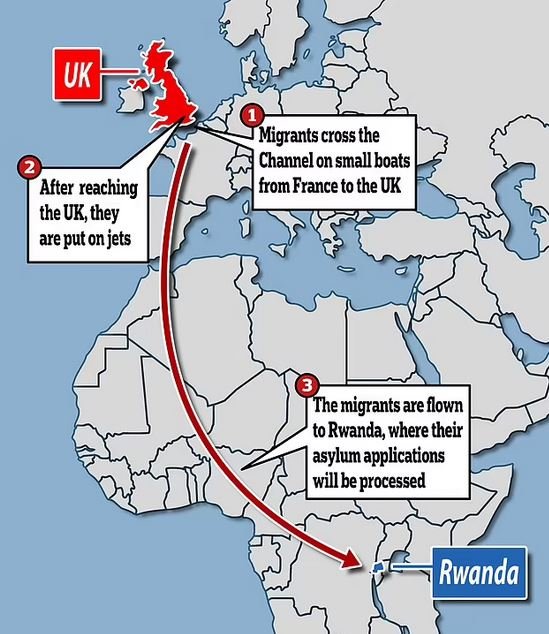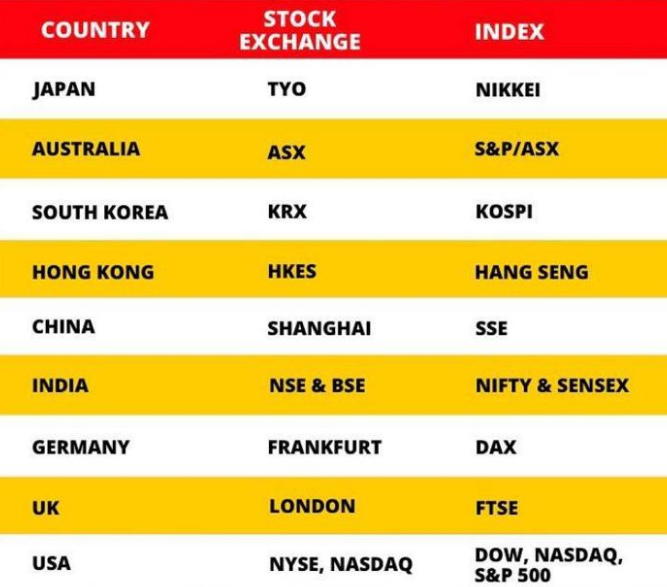
Current Affairs for UPSC Civil Services Exam – March 22, 2024
Subscribers of "Current Affairs" course can Download Daily Current Affairs in PDF/DOC
Subscribe to Never Miss an Important Update! Assured Discounts on New Products!
Must Join PMF IAS Telegram Channel & PMF IAS History Telegram Channel
{GS1 – A&C – Architecture} Pandavula Gutta | Ramgarh Crater
- Context (TH | TOI): Pandavula Gutta, a geological marvel older than the Himalayan hills, has been officially recognised as the sole Geo-heritage site in Telangana.
Pandavula Gutta, Telangana
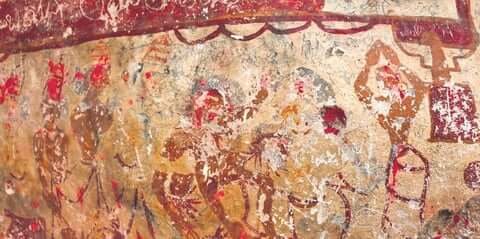
- Pandavula Gutta is a hillock located about 50 km away from Warangal city. It is older than Himalayas.
- It was first discovered in the year 1990. It is rich in terms of number of paintings, rock shelters and its habitation, right from the Mesolithic to medieval times.
- These cave paintings offer a rare glimpse into the prehistoric man’s rock art identified on walls and ceilings of caves, rock shelters and isolated boulders.
- The rock art paintings depict wildlife like Bison, Antelope, Tiger, and Leopard, etc.
- Other shapes like swastika symbol, circles and squares, weapons such as bows, arrows, sword and lancer and so on are present in these paintings.
- The paintings also feature geometrical designs and impressions in green, red, yellow and white pigment colours.
Ramgarh Crater, Rajasthan

- Ramgarh Crater has been named India’s first National Geo Heritage site by the Rajasthan Government.
- The structure is 165 million years old and 3.5km across and is a culturally significant and spiritual site with a 10th century temple.
- It has been declared a Conservation Reserve, namely Ramgarh Conservation Reserve under the Wildlife Protection Act, 1972.
- The Pushkar Talab complex, located inside the crater, is a source of both saline and alkaline water.
- Bhand Deva Temple is constructed on the meteor impact crater.
What are Geo-Heritage Sites?
- Geo-heritage refers to sites that offer insights into the evolution of the earth and can be used for research, reference, and awareness.
- These sites may have unique rock formations, fossils, or landscapes that are important for education, research, cultural significance, or visual appeal.
- The Geological Survey of India (GSI) declares geo-heritage sites/national geological monuments for protection and maintenance.
- Objectives:
- Promote geotourism.
- Preserve unique geological formations.
- Enhance geological literacy among the public.
Geological Survey of India
|
{GS1 – IS – Issues} Income and wealth inequality in India from 1922 to 2023
- Context (IE | IE): A new working paper by the World Inequality Lab examines income and wealth inequality in India from 1922 to 2023.
- Data from various sources, such as national income accounts, wealth aggregates, tax records, and surveys, were used for the analysis.
Key Findings
Growth in average incomes
- 1960-1990: growth rate of 1.6% per year.
- 1990-2022: growth rate of 3.6% per year.
- The fastest growth periods: 2005-2010 (4.3% per year) & 2010-2015 (4.9% per year).
Emergence of very high net worth individuals
- From 1990 to 2022, India experienced a rise in national wealth along with the emergence of very high-net-worth individuals.
- The number of such individuals increased from 1 in 1991 to 52 in 2011 and further to 162 in 2022.
|
Rise in the percentage of income tax payers
- The proportion of adults filing income tax returns was less than 1% until the 1990s, but it saw significant growth after the economic reforms of 1991.
- By 2011, this proportion had exceeded 5%, indicating a substantial increase.
- Over the last decade, roughly 9% of adults filed tax returns between 2017 and 2020.
Extreme levels of inequality in India in 2022-23
- The top 1% received 22.6% of the national income, the highest since 1922, surpassing even the colonial period.
- Additionally, the wealth share of the top 1% stood at 40.1%, the highest since data collection began in 1961.
- It raises concerns about the sustainability of such heightened inequality levels without significant social and political repercussions.

Extreme wealth concentration at the very top
- Between 1961 and 2023, the wealth share of the top 1% tripled from 13% to 39%. Most of these gains occurred after 1991, with the top 1% shares consistently rising until 2022-23.
- Within the top 1%, wealth concentration is exceptionally high. In 2022-23, the top 1% held 39.5% of the wealth.
International comparison of income inequality
- The paper compares India’s income and wealth inequality with several countries, including Brazil, China, France, South Africa, the United Kingdom, and the United States as of 2022.
- India ranks second in terms of the income share of the top 10%, trailing only South Africa.
- However, when looking at the income share of the top 1%, India has the highest level at 22.6%.
- According to the paper, India’s top 1% income share is among the highest globally.
International comparison of wealth inequality
- Both with the top 10% and the top 1%, India’s wealth concentration is moderate.
- Brazil and South Africa exhibit extreme levels of wealth concentration, with top 10% shares of 85.6% and 79.7%, respectively.
Poor data leading to likely underestimation of inequality
- The economic data quality in India is notably poor and has worsened recently.
- The paper suggests that the findings likely underestimate the true levels of inequality.
Policy solution
- Implementing a super tax on Indian billionaires and multimillionaires is suggested.
- Restructuring the tax schedule to cover both income and wealth is proposed.
World Inequality Lab
|
{GS2 – Governance – Policies} Fact Check Unit
- Context (IE): Supreme Court had stayed amended Information Technology (IT) Rules to identify “fake news” on social media platforms through a “Fact Check Unit” (FCU).
- Union Electronics and IT Ministry had notified the FCU as a statutory body under the Press Information Bureau.
- It was given the power to flag what it believes is false information related to the central government and its agencies on social media sites.
2023 Amendment
- The 2023 amendment to the IT Rules, 2021, which allowed the Meity to appoint the FCU.
- Rules made it obligatory on intermediaries like social media platforms “to not to publish, share or host fake, false or misleading information in respect of any business of the Central Govt.”.
- Amendment expanded the term “fake news” to include fake news involving government business.
- These rules also brought in a legal framework for the online gaming ecosystem.
About the issue
- Challenged in Bombay HC: As violative of Article 14, Article 19(1)(a) and (g), and Article 21 of the Constitution, as well as Section 79 and the Information Technology Act, 2000 (IT Act).
- Section 79 of the IT Act 2000 states that an intermediary is not liable for any third-party information, data, or communication link made available or hosted by him.
- Section 69 of the IT Act: Empowers the government to issue directions to block public access to any information through any computer resource.
- Perceived as contrary to fundamental rights: Parliament cannot exercise rulemaking or legislation-making powers that are contrary to fundamental rights.
- After a split verdict by Bombay HC, the matter is being heard by a third judge bench.
- Stay by Supreme Court bench: The bench headed by the Chief Justice of India (CJI) has stayed the amended Rules until the Bombay High Court concludes.
Validity of Stay
- Presumption of constitutionality: Petitioner has to prove unconstitutionality under judicial review.
- Not a direct expression of Parliament: These rules are made as delegated power of central govt.
- Explicit finding of unconstitutionality: Bombay HC’s split verdict and Supreme Court observations find it prima facie debatable.
- Earlier, Maharashtra reservation law and Farm laws were also stayed on similar ground.
{GS2 – IR – India-EU} Trade and Economic Partnership Agreement (TEPA)
- Context (TH): The India-EFTA Trade and Economic Partnership Agreement (TEPA) was signed recently.
- This agreement marks a shift towards closer economic relations with European nations and the Western world. It’s the first FTA that India has signed with any European country.
- It shows India’s strong commitment to trade liberalisation, especially during a time when protectionism is on the rise.
- This follows swiftly after the conclusion of FTAs with Australia and the UAE, with negotiations for FTAs with the U.K. and the EU also progressing.
Key features of TEPA
Investment
- EFTA countries to invest $100 billion in India, creating one million jobs over 15 years.
- India can withdraw tariff concessions if the investment and job targets aren’t met.
- For the targets to happen, India must grow at 9.5% and EFTA investments must yield over 16% annually.
- If not achieved, both sides can lower their goals, and India can adjust tariff concessions after 18 years.
- The investment chapter isn’t subject to dispute resolution.
Trade in goods
- EFTA countries gain more access to India’s market with tariff concessions.
- India will eliminate tariffs on most products within seven to 10 years.
- Tariffs on cut and polished diamonds will reduce from 5% to 2.5% in five years.
- Tariff cuts for wines will vary based on price, gradually decreasing over 10 years.
- EFTA exports like seafood, fruits, coffee capsules, oils, sweets, and processed foods benefit.
- Also covered are smartphones, bicycle parts, medical equipment, clocks, watches, medicines, textiles, apparel, iron and steel products, and machinery.
- Excluded products: Gold, dairy, soya, coal, and some agricultural products.
- India’s exports to EFTA countries will not be significantly affected because most products already have low or zero tariffs owing to Most Favoured Nation (MFN) status in EFTA countries.
- For instance, 98% of India’s $1.3 billion merchandise exports to Switzerland are industrial products with zero tariffs.
Trade in services
- Both India and EFTA members agreed to liberalise services across various sectors.
- Norway commits to allowing access for Indian yoga instructors and traditional medicine practitioners, following its legal rules.
- Norway and Switzerland offer four and three years, respectively, for skilled Indian professionals under intra-corporate transfers, with work permit requirements.
- TEPA includes a framework to ease recognition of service suppliers’ qualifications.
- Financial and telecom services have separate annexes aiming to facilitate service provision.
- Unlike past FTAs, TEPA extends service trade benefits to any corporate entity incorporated in an EFTA member, regardless of its operations location, including those with which India does not have FTAs.
- However, benefits under the investment chapter are limited to entities with substantial business activities within EFTA.
Sustainable development
- TEPA includes a chapter on Trade and Sustainable Development (TSD), covering environmental and labour aspects. It’s the first time India has included such commitments in an FTA.
- The TSD chapter mentions various international agreements and conventions on environment and labour, the implementation of which is based on a balance of rights and obligations. For example,
- The UN Framework Convention on Climate Change and the Paris Agreement recognise differential obligations for developed and developing countries.
- Labour conventions under the International Labour Organization (ILO) are based on a tripartite framework involving the government and organisations representing employers and employees.
- While the TSD chapter doesn’t involve dispute resolution, India needs to ensure any scrutiny of its implementation respects the balance in these agreements.
Intellectual Property Rights
- EFTA countries have pharmaceutical and high-tech multinational companies. They want stronger commitments to protect intellectual property rights than the WTO‘s TRIPS Agreement. TEPA acknowledges some of these requests.
- For instance, India’s Patents Act allows opposition to patent applications before they are granted.
- TEPA’s IPR Annex says these oppositions should be swiftly rejected if they are prima facie unfounded.
- This means India’s internal process may face scrutiny to ensure this standard is met.
- Also, Indian law requires annual reports on how patents are being used.
- TEPA wants this reporting frequency to increase to three years, with annual reports needed only in specific cases.
- This raise concerns that Indian law may need to change to accommodate this requirement.
To know more about India and EFTA, visit > India and EFTA.
{GS2 – IR – Pakistan} Gwadar Port Complex attack
- Context (IE): Majeed Brigade of the separatist group Baloch Liberation Army (BLA) has claimed responsibility for Gwadar Port complex attack in Pakistan.
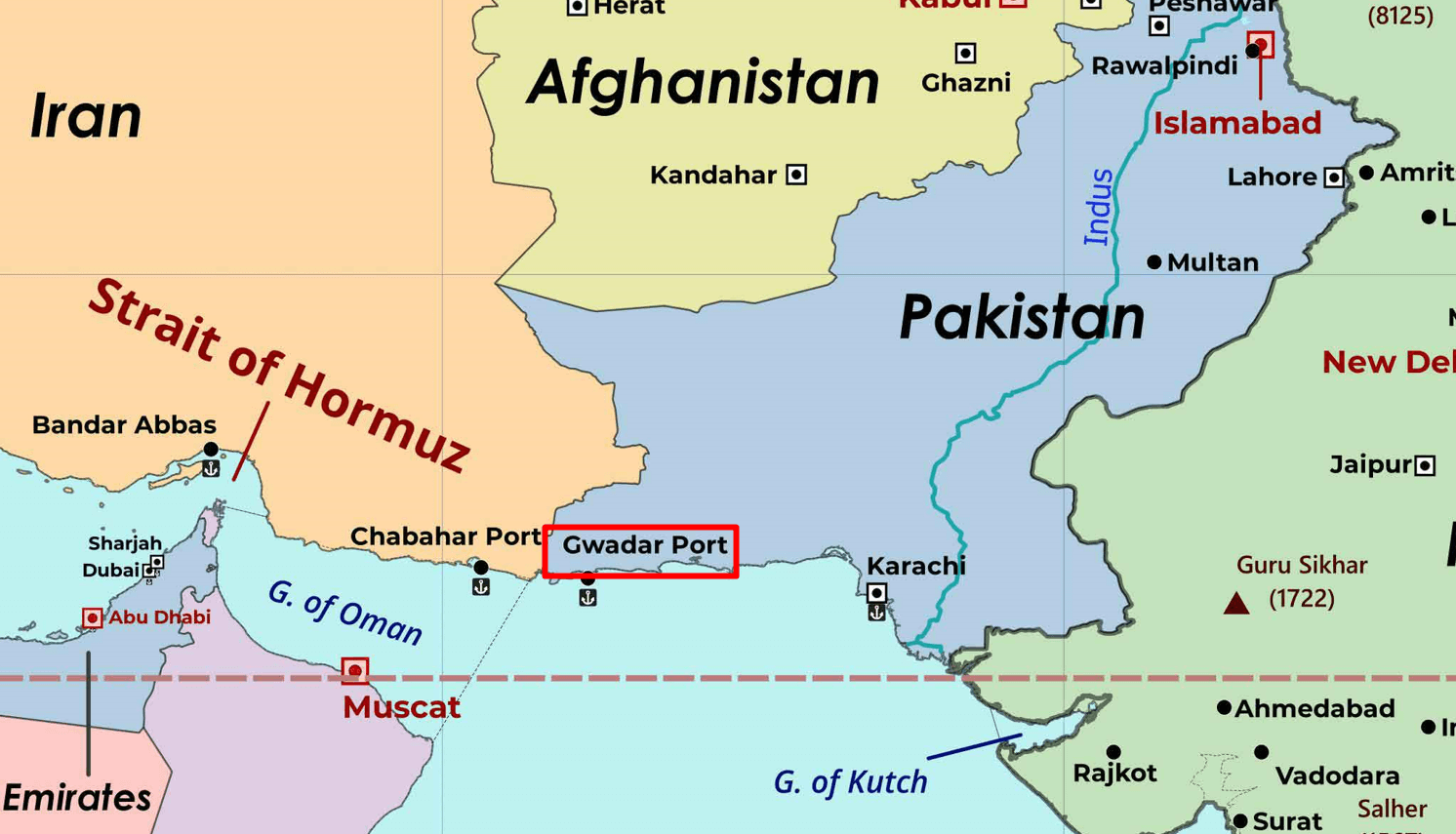
Balochistan Context
- Balochistan chiefdoms, including Ahmed Yar Khan, the chief of Kalat, hoped to secure an independent state, but after Pakistan invaded Kalat in 1948, he was forced to accede.
- This triggered an ongoing insurgency fuelled by persisting economic disaffection, political disenfranchisement, and repression by Pakistan.
- Gwadar Port as Symbol of economic injustice: Despite rampant unemployment in the province, engineers and technical specialists were hired from Punjab, Sindh, and even China.
Majeed Brigade
- National Awami Party in Balochistan faced repression (1972) by then-Pakistani PM Zulfiqar Ali Bhutto.
- Majeed Langove Senior’s failed assassination attempt in 1974 gathered him martyrdom in Balochistan. His younger brother also followed the struggle.
- Majeed Langove brothers were raised to near-mythical status.
- Later, Aslam Achu, a BLA leader, decided to establish a suicide squad named ‘Majeed Brigade’.
- Other attacks: Chinese Consulate in Karachi (2018), the Gwadar Pearl Continental Hotel (2019), and the Pakistan Stock Exchange in Karachi (2020).
For more details, visit > Baloch insurgency
{GS2 – MEITY – Initiatives} BhashaNet portal
- Context (PIB): The BhashaNet portal, a joint initiative by the Ministry of Electronics and Information Technology (MeitY) and the National Internet Exchange of India (NIXI), was launched at the Universal Acceptance Day event.
- The initiative, supported by the Internet Corporation for Assigned Names and Numbers (ICANN), aims to promote digital inclusion and Universal Acceptance (UA) across India.
- Theme: “BhashaNet: Impetus Towards Universal Acceptance”.
- The portal supports Universal Acceptance (UA) by offering resources and tools.
- It assists developers, businesses, and organizations in making their systems UA-compliant.
- Resources are available in 22 Indian languages for wider accessibility.
- Significance: By promoting UA adoption, the portal aims to bridge the digital divide. It ensures everyone has access to digital services, regardless of language or script.
|
{GS3 – Agri – Crops} Byadgi Chilli
- Context (TH): AMPC e-tender process of Byadagi Chilli in Byadagi triggers violent protest over alleged low prices.
- Byadgi chilli, named after the town of Byadgi in the Haveri district of Karnataka, is a distinctive variety of chilli pepper.
- Renowned for its vibrant colour, it’s less spicy compared to other varieties, making it a staple in South Indian cuisine.
- 2 primary varieties: Byadgi Kaddi and Byadgi Dabbi.
- Byadgi Kaddi is gnarled, thin, and elongated, with fewer seeds. It is less popular for its colour and flavour than the Dabbi variety.
- Byadgi Dabbi is small and plump, prized for its colour, flavour, and mild spiciness. It is ideal for masala preparation and oleoresin extraction.
- Other varieties, including Guntur chilli.
- These Byadgi chilli varieties were granted the Geographical Indication (GI) tag in February 2011.
- It has the second-largest turnover among all chilli varieties in India.
Uses
- Used in pickles, masala products, and chilli powder due to its natural colour and low pungency.
- The bright red colour makes it ideal as a colouring agent.
- Oleoresin extracted from Byadagi chillies is utilized in nail polish and lipstick manufacturing.
- Oleoresin is also used in cheese, sauces, spice mixtures, egg yolk colouring, confectioneries, cosmetics, beverages, meat, pharmaceuticals, poultry and cattle feed, and textile dyeing.
{GS3 – Envi – Pollution} Plastic Waste Management (Amendment) Rules, 2024
- Context (TH): Ministry of Environment, Forest and Climate Change has notified an amendment to the Plastic Waste Management Rules, 2016, titled the Plastic Waste Management (Amendment) Rules, 2024.
- The amendments aim to enhance plastic waste management practices in the country.
Key Takeaways
Expanded Definitions
Producer
- Producer now includes entities engaged in manufacturing plastic packaging, and includes a person engaged in manufacture of intermediate material to be used for manufacturing plastic packaging.
- It is also the person engaged in contract manufacturing of products using plastic packaging or through other similar arrangements for a brand owner.
- Earlier it was limited to people engaged in manufacturing of plastic packaging only.
Manufacturer
- Manufacturer” means and includes a person engaged in production of plastic raw material, including compostable plastics and biodegradable plastics.
- Earlier, Compostable and Biodegradable plastic were not included.
|
Importer
- It includes various plastic resins/ Pellets/ intermediate material used for manufacturing plastic packaging/films/ preforms for commercial use.
- Earlier definition was only for plastic packaging/ carry bags or MLP.
Responsibility of Local Bodies
- The local body shall undertake assessment of plastic waste generated, including plastic waste existing in dump sites, by 30th June of every year and also estimate the quantity of plastic waste to be generated in following five year period.
- The local body shall take necessary measures to prevent stocking, distribution, sale and usage of prohibited single use plastic items in their jurisdiction.
Selling of Plastic Raw Materials
- Manufacturer and Importer shall sell plastic raw material only to Producer or Seller registered under these rules and not sell plastic raw material to any entity or units engaged in manufacturing of prohibited single use plastic items.
Registration and Reporting Obligations for Manufacturers and Importers
- Manufacturers and importers of plastic raw material are required to apply for registration with the State Pollution Control Board (SPCB).
- Additionally, they must submit quarterly and annual reports, as specified, by the respective deadlines (last day of month following the quarter and an annual report by 30th June of every year).
Introduction of Sellers
- Sellers are defined as entities who sell plastic raw material such as resins or pellets or intermediate material used for producing plastic packaging.
- Sellers are mandated to submit an annual report detailing transactions to the relevant pollution control authorities by June 30th each year.
Introduction of New Biodegradable Plastics Category (V)
- A new category for biodegradable plastics (Category V) has been introduced, with specific labelling requirements and separate markings to be designated by the BIS.
Thickness Requirement Exemption for compostable/biodegradable Carry Bags
- “Carry bags made of virgin or recycled plastic shall not be less than fifty microns in thickness,” while compostable/biodegradable carry bags are exempted from this requirement.
|
Pre-consumer Waste Processing Obligations
- Manufacturers are obligated to process pre-consumer plastic waste generated in the form of reject or discard material at the stage of manufacturing and report these activities to the SPCB/CPCB.
Minimum Recycling Target Introduction
- Manufacturers/importers must meet minimum recycling levels for plastic packaging waste as specified in the Extended Producer Responsibility (EPR) targets.

Micro and Small Enterprise Exemption from EPR Obligations
- Micro and small enterprises, as per the MSME Development Act, 2006, are exempted from direct EPR obligations.
- These obligations are shifted to the manufacturer or importer of plastic raw materials supplying to such entities.
- Target for the use of recycled plastic content are:

Price Cap Implementation
- The CPCB is tasked with establishing high and low price caps for EPR certificates, ensuring a standardized pricing mechanism.
Annual Filing Deadline Extension
- The deadline for filing annual returns for the financial year 2022-2023 has been extended until March 31st, 2024.
{GS3 – Envi – Water} World Water Day | UN WWD Report
- Context (TH): 31st World Water Day was observed on March 22, 2024.
- Theme: Leveraging water for peace.
United Nations World Water Development
- The 2024 edition of the United Nations World Water Development (UN WWD) Report was also released under the ‘World Water Assessment Programme’.
- Titled “Water for Prosperity and Peace”, it was developed by UNESCO and UN-Water.
- The report emphasises Water diplomacy to address meteorological extremities (like monsoon uncertainty and floods), climate change pressures, and transboundary river issues.
- This year’s report also highlights a general shortage of water quality data globally and points to the urban-rural divide.
- Four out of five people lacking at least basic drinking water services live in rural areas.
- Role of indigenous communities: Report observes extensive cross-border networks, civil society and academic networks can help in preventing, mitigating, and resolving water-related disputes.
Issue of transboundary waters
- 153 countries can be classified as water-sharing nations, and all transboundary waters account for 60% of the world’s freshwater flows.
- Of these 153 countries, just 24 have managed to reach a 100% cooperation agreement on their shared waters, as per a 2021 UNESCO progress report on Sustainable Development Goal indicator 6.5.2 titled “Progress on transboundary water cooperation.”
- Need of a sophisticated form of cross-border water governance: To ensure promote effective and equitable water allocation among nations that share water resources.
{GS3 – S&T – Tech} RO water purification systems is not universal
- Context (DTE): Experts warn that Reverse Osmosis (RO) water with dangerously low levels of mineral content can have an adverse impact on health.
- Reasons to prefer RO water: Concerns about tap water quality, contaminated groundwater, and irregular water supplies.
- The water purifier market in India is expected to double from $3,080.7 million in 2023 to $6,880.3 million by 2032.
- Despite its dominance, the effects of RO water on health and industry regulations remain unclear.
Need for RO water purification systems
- Water contains helpful microscopic organisms and essential minerals like calcium and magnesium, which aid in muscle and heart function.
- Sodium, potassium, copper, iron, and zinc are also present in small amounts.
- Polluted water can carry disease-causing microbes, fertilisers, and heavy metals like chromium and lead.
- Groundwater may contain elements like fluorides and heavy metals such as chromium, arsenic, and lead, which can cause health issues if consumed in large amounts.
- The presence of minerals and heavy metals in water is known as total dissolved solids (TDS), responsible for its taste and hardness.
- High levels of total dissolved solids (TDS) in water can cause unpalatable taste and hardness.
- Reverse osmosis (RO) systems are becoming popular for purifying water as they can remove impurities and lower TDS levels.
- An RO system consists of a semi-permeable membrane with tiny pores (0.0001 to 0.001 microns in size) that separate dissolved salts and impurities from water under pressure.
- As untreated water passes through the membrane under applied external pressure, dissolved salts, impurities, and germs are separated, providing clean and sweet water.
Issues with RO systems
- RO systems claim to remove 90-100% of TDS. However, essential minerals like calcium and magnesium are also lost in the process.
- This loss could be a public health concern as many people in the country suffer from micronutrient deficiency.
- In most houses surveyed by SPECS, RO water has TDS levels of 18 to 25 mg/l, which is considered unsuitable for drinking. ( PECS, an NGO in Dehradun
- According to SPECS, drip candle filters can be used for purification in many areas. However, due to a lack of awareness, people opt for RO systems unnecessarily.
- In August 2023, a study by researchers from Medical College Baroda found that RO systems remove 90-92% of beneficial calcium and magnesium.
- The study, published in the Journal of the Indian Medical Association, linked RO water usage to joint pain among urban citizens of Vadodara.
- Another study in Vadodara, published in January 2022, found that RO water causes micronutrient deficiency.
- It analysed patients at SSG Hospital in 2017-18 and found a significant association between RO water usage and vitamin B12 deficiency.
- Factors like a vegetarian diet, dark complexion, and socio-economic status were also linked to vitamin B12 deficiency.
- In a 2005 paper, the World Health Organization (WHO) documented cases from the Czech and Slovak populations.
- They began using RO systems in home taps around 2000-02.Shortly after, complaints of cardiovascular disorders, tiredness, weakness, and muscular cramps emerged.
- The WHO paper suggests acute magnesium (and possibly calcium) deficiency as the cause.
- BIS cautioned in its 2015 standards that RO systems aren’t suitable for areas where arsenic levels exceed 0.1 mg/l and fluoride levels surpass 8.0 mg/l, but this was removed from the updated 2023 standards.
Various Methods to Remove impurities from Water


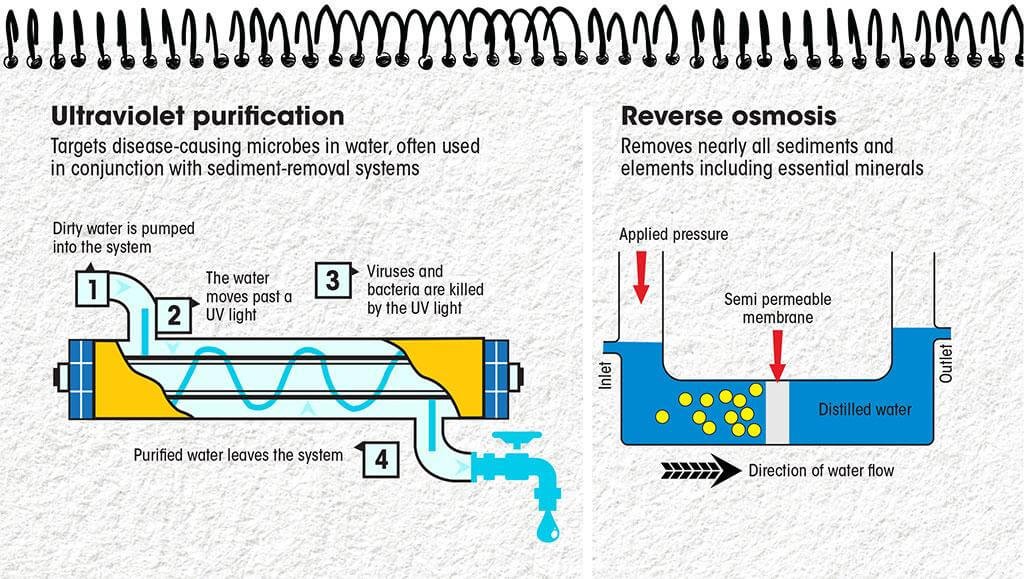

Steps taken
- National Green Tribunal (NGT) in May 2019, the Union Environment Ministry directed the issuance of a notification to prohibit the use of RO purifiers where TDS in water is less than 500 mg/l. Wherever RO is allowed, a requirement was set for more than 60% water recovery.
- The report stated that RO systems are not useful if TDS is less than 500 mg/l.
- It also highlighted the removal of important minerals and wastage of water by RO in such cases.
- In March 2022, the Supreme Court stayed the NGT order following a challenge by the Water Quality India Association, a non-profit in Mumbai.
- The Union environment ministry issued the Water Purification System (Regulation of Use) Rules, 2023, In November.
- These rules provide guidelines for managing reject water and discarded elements from purification systems. RO companies have one year to comply with these rules.
- WHO’s 2017 drinking water standards recommend TDS levels between 600 and 1,000 mg/l. However, there’s limited data on whether high or low TDS affects health.
- Bureau of Indian Standards (BIS) has set the maximum TDS limit at 500 mg/l since 1991. Europe, the US, and Canada set TDS standards at 500 to 600 mg/l
Way forward
- Experts suggest that the necessity of RO depends on the region and water condition, recommending it only for areas with hard surface or groundwater.
- In places where surface water is used for drinking, a combination of candles, activated carbon, and UV filters is usually sufficient to purify the water.
- Experts urge that the water supplied through pipes to every household should meet BIS standards, eliminating the need for RO in such areas.
{Prelims – In News} 4th SCO Startup Forum
- Context (PIB): The 4th edition of the Shanghai Cooperation Organisation (SCO) Startup Forum was held in New Delhi.
- Objective: Encourage collaboration and innovation among startups within the SCO Member States.
- The forum serves as a platform for exchanging ideas, fostering partnerships, and facilitating the growth of startups across the SCO region.
- Startup India conducted a workshop on ‘Establishing a Seed Fund: A Strategic Approach to Fostering Innovation and Entrepreneurship’.
{Prelims – In News} World Happiness Report 2024
- Context (IE | TH): Finland ranked as the happiest country in the world again, according to The World Happiness Report.
- The World Happiness Report is published annually by the United Nations Sustainable Development Solutions Network.
- It takes into account six variables:
- Healthy life expectancy,
- GDP per capita,
- Social support,
- Freedom,
- Generosity and
- Perception of corruption.
- The report was a collaborative effort between Gallup, the U.N. Sustainable Development Solutions Network and Oxford Wellbeing Research Centre.
- It is supported by taking the average life evaluation data gathered by the Gallup polls for the 2021-23 period.

- Happiest country: Finland, for the 7th successive year.
- For the first time, happiest nations no longer include any of the world’s largest countries.
- India ranked 126th while China ranked 60th, Nepal at 93, Pakistan at 108, Myanmar at 118, Sri Lanka at 128 and Bangladesh at 129th spots.
- This was the first edition that looked at the intersectionality of life satisfaction with age and generations: happiness for the world’s young and old diverges into two different arcs.
- Worldwide, women were less happy than men in every region, with the gender gap widening as they aged.
- The report observed that in India, older age is associated with higher life satisfaction. However, older Indian women reported lower life satisfaction than older men.
- Education and caste played key roles, with older adults with secondary or higher education and those of higher social castes reporting higher life satisfaction than their counterparts without formal education and those from scheduled castes and scheduled tribes.
{Prelims – S&T – Defence} Exercise IMT TRILAT
- Context (PIB): The 2nd edition of the India-Mozambique-Tanzania Trilateral Exercise (IMT TRILAT-2024) is scheduled to take place from March 21 to March 29, 2024.
- It is a joint maritime exercise involving the Indian Navy, Mozambique Navy, and Tanzanian Navy.
- The exercise is planned in 2 phases: Harbour Phase & Sea Phase.
- The 1st edition was conducted in Oct 2022.





![PMF IAS Environment for UPSC 2022-23 [paperback] PMF IAS [Nov 30, 2021]…](https://pmfias.b-cdn.net/wp-content/uploads/2024/04/pmfiasenvironmentforupsc2022-23paperbackpmfiasnov302021.jpg)

